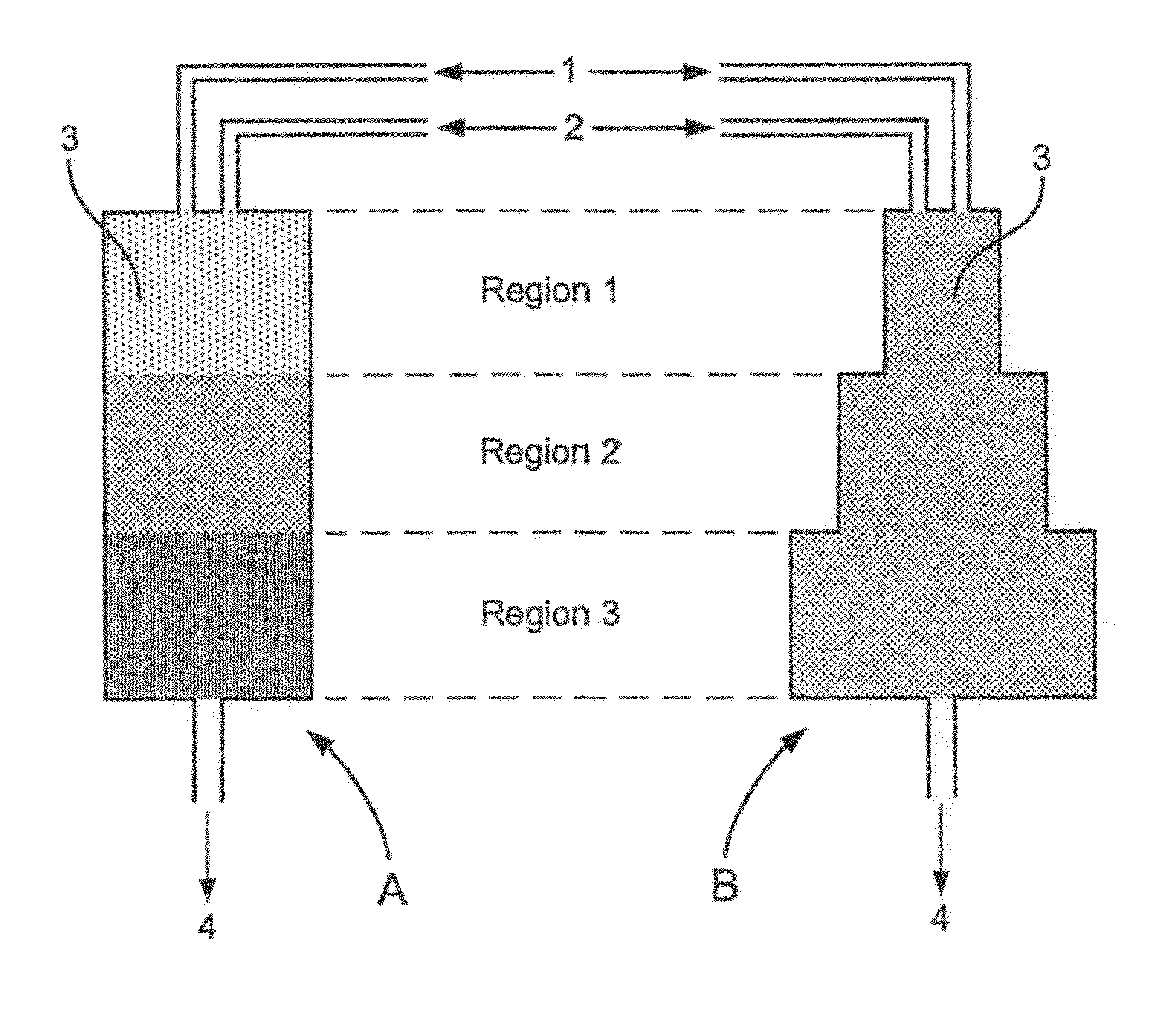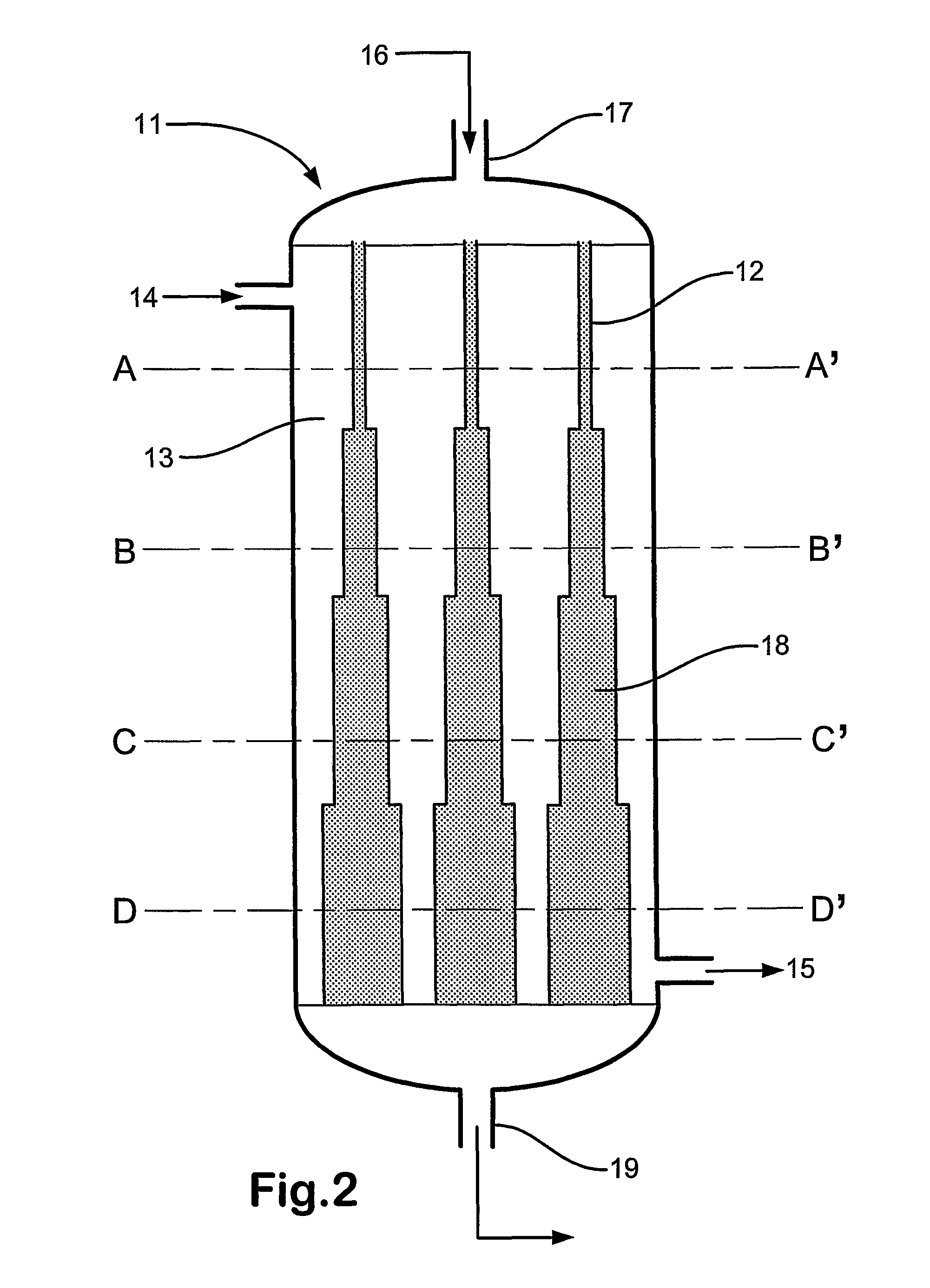Process for producing condensed-phase product from one or more gas-phase reactants
a technology of gas-phase reactants and condensed-phase products, which is applied in the preparation of oxygen-containing compounds, physical/chemical process catalysts, metal/metal-oxide/metal-hydroxide catalysts, etc., can solve the problem of not addressing the coverage of solid catalysts with condensed-phase products, and achieve less coverage of catalysts, reduce the ratio of liquid products to one or more catalyst components, and increase the cross-sectional area and volume of solid catalysts
- Summary
- Abstract
- Description
- Claims
- Application Information
AI Technical Summary
Benefits of technology
Problems solved by technology
Method used
Image
Examples
Embodiment Construction
[0038]FIG. 1 illustrates the difference in the concentration of a condensed-phase product in three regions of a reactor A with a solid catalyst having regions of constant cross-sectional area and volume, and uniform concentration of the one or more catalyst components, and a reactor B with solid catalyst having the same solid catalyst, but with regions of different cross-sectional area and volume. The solid catalyst of reactor A is therefore not in accordance with the present invention, while that of reactor B is in accordance with the present invention. Two reactants 1 and 2 are co-currently and downwardly fed into each reactor, and react in the gas-phase in the presence of the solid catalyst (not shown) to produce condensed-phase product 4. The concentration of the condensed-phase product 3 within the reactor is represented by the degree of shading, wherein light shading represents a low concentration of condensed-phase product and heavy shading represents a high concentration of ...
PUM
| Property | Measurement | Unit |
|---|---|---|
| pressure | aaaaa | aaaaa |
| pressure | aaaaa | aaaaa |
| pressure | aaaaa | aaaaa |
Abstract
Description
Claims
Application Information
 Login to View More
Login to View More - R&D
- Intellectual Property
- Life Sciences
- Materials
- Tech Scout
- Unparalleled Data Quality
- Higher Quality Content
- 60% Fewer Hallucinations
Browse by: Latest US Patents, China's latest patents, Technical Efficacy Thesaurus, Application Domain, Technology Topic, Popular Technical Reports.
© 2025 PatSnap. All rights reserved.Legal|Privacy policy|Modern Slavery Act Transparency Statement|Sitemap|About US| Contact US: help@patsnap.com



